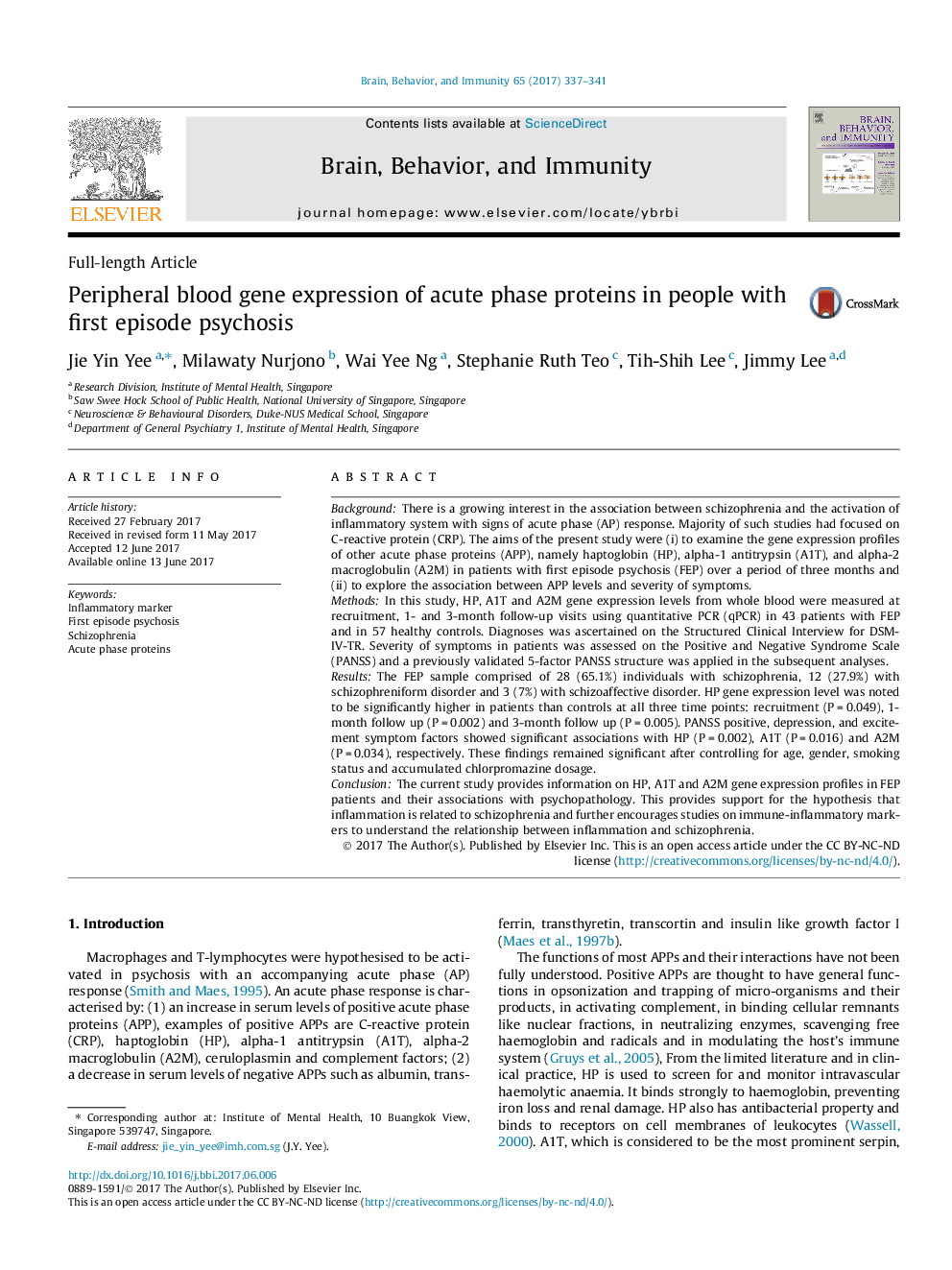| کد مقاله | کد نشریه | سال انتشار | مقاله انگلیسی | نسخه تمام متن |
|---|---|---|---|---|
| 5040606 | 1473902 | 2017 | 5 صفحه PDF | دانلود رایگان |
- Examine acute phase protein gene expression levels in first-episode psychosis.
- Evaluate association between acute phase protein and severity symptoms.
- Haptoglobin levels were significantly higher in patients at all time points.
- Haptoglobin levels associated with PANSS positive, depression and excitement.
BackgroundThere is a growing interest in the association between schizophrenia and the activation of inflammatory system with signs of acute phase (AP) response. Majority of such studies had focused on C-reactive protein (CRP). The aims of the present study were (i) to examine the gene expression profiles of other acute phase proteins (APP), namely haptoglobin (HP), alpha-1 antitrypsin (A1T), and alpha-2 macroglobulin (A2M) in patients with first episode psychosis (FEP) over a period of three months and (ii) to explore the association between APP levels and severity of symptoms.MethodsIn this study, HP, A1T and A2M gene expression levels from whole blood were measured at recruitment, 1- and 3-month follow-up visits using quantitative PCR (qPCR) in 43 patients with FEP and in 57 healthy controls. Diagnoses was ascertained on the Structured Clinical Interview for DSM-IV-TR. Severity of symptoms in patients was assessed on the Positive and Negative Syndrome Scale (PANSS) and a previously validated 5-factor PANSS structure was applied in the subsequent analyses.ResultsThe FEP sample comprised of 28 (65.1%) individuals with schizophrenia, 12 (27.9%) with schizophreniform disorder and 3 (7%) with schizoaffective disorder. HP gene expression level was noted to be significantly higher in patients than controls at all three time points: recruitment (PÂ =Â 0.049), 1-month follow up (PÂ =Â 0.002) and 3-month follow up (PÂ =Â 0.005). PANSS positive, depression, and excitement symptom factors showed significant associations with HP (PÂ =Â 0.002), A1T (PÂ =Â 0.016) and A2M (PÂ =Â 0.034), respectively. These findings remained significant after controlling for age, gender, smoking status and accumulated chlorpromazine dosage.ConclusionThe current study provides information on HP, A1T and A2M gene expression profiles in FEP patients and their associations with psychopathology. This provides support for the hypothesis that inflammation is related to schizophrenia and further encourages studies on immune-inflammatory markers to understand the relationship between inflammation and schizophrenia.
Journal: Brain, Behavior, and Immunity - Volume 65, October 2017, Pages 337-341
